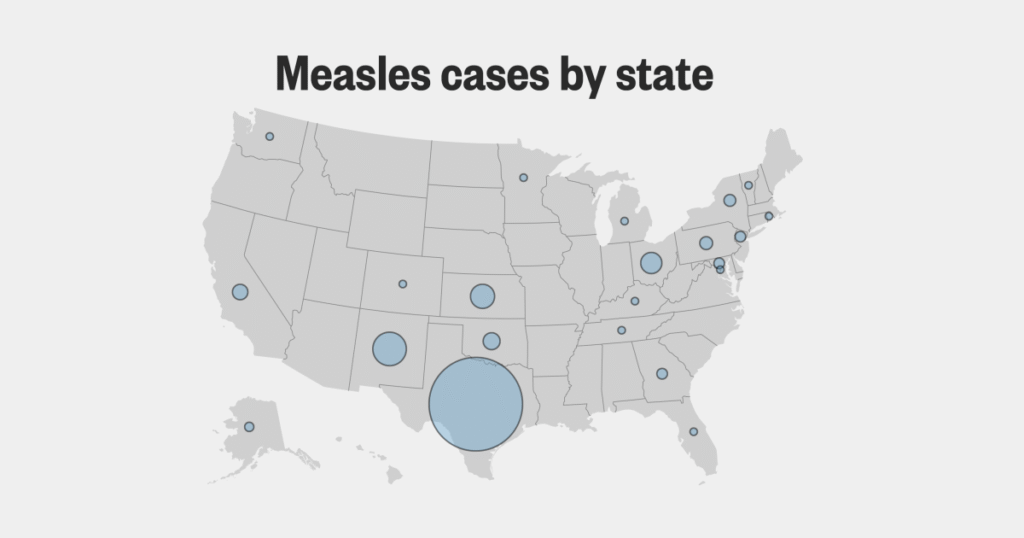Surge in Measles Cases Sparks Vaccination Concerns Across the U.S.
In a troubling development for public health in the United States, the year 2025 has marked the highest incidence of measles in over three decades, according to data released by the Centers for Disease Control and Prevention (CDC). A significant portion of these cases has been linked to an outbreak in West Texas, which has resulted in the tragic loss of two young lives.
As of now, Texas has reported over 760 confirmed measles cases, contributing to a national total that exceeds 1,300, with infections documented in at least 39 different states. The CDC warns that measles is among the most contagious infectious diseases, capable of causing severe complications such as pneumonia, encephalitis, and in some instances, fatalities.
Impact of Vaccination Rates
While many individuals recover from measles without severe issues, the data indicates that approximately 1 in 5 unvaccinated individuals who contract the disease will require hospitalization. Furthermore, the CDC estimates that 1 in 1,000 cases could lead to life-threatening brain swelling. The highest mortality rate is observed in children, where the statistics reveal that up to 3 out of every 1,000 infected children will succumb to the disease.
| Year | Confirmed Cases | Deaths |
|---|---|---|
| 2019 | 1,274 | 1 |
| 2025 | 1,300+ | 2 |
The recent outbreak has predominantly affected children and adolescents, most of whom either have not been vaccinated or whose vaccination status remains unknown. Health officials reported that the first child who died was school-aged and unvaccinated, while the second was an 8-year-old girl, also unvaccinated and without any pre-existing health conditions.
Historical Context and Vaccination Guidelines
Prior to this year, the last recorded measles-related death in the U.S. occurred in 2019, when a 37-year-old man in California succumbed to complications linked to the disease. Outbreaks were particularly rampant in states like New York, California, and Washington, with health experts attributing the resurgence of preventable illnesses to declining vaccination rates.
According to CDC figures, approximately 93% of kindergarten-aged children in the U.S. were vaccinated against measles for the 2021-2022 school year, a figure that dipped to 92.7% for the 2023-2024 school year. This decline contrasts sharply with the 95.2% vaccination rate observed during the 2019-2020 period—a level deemed necessary to maintain effective community immunity.
In response to the alarming situation, Health and Human Services Secretary Robert F. Kennedy Jr. has publicly endorsed vaccination efforts, urging the public to receive the measles vaccine in light of the ongoing outbreak. Notably, this encouragement marks a pivotal shift in Kennedy’s previous stance on vaccine mandates, although he reiterated that such conditions should not be enforced by the government.
With the CDC actively tracking measles cases across the nation, it remains critical for communities to prioritize vaccination as a means of safeguarding public health. As states release updated figures, the emphasis on immunization continues to be a focal point to prevent further spread of this highly contagious disease.

